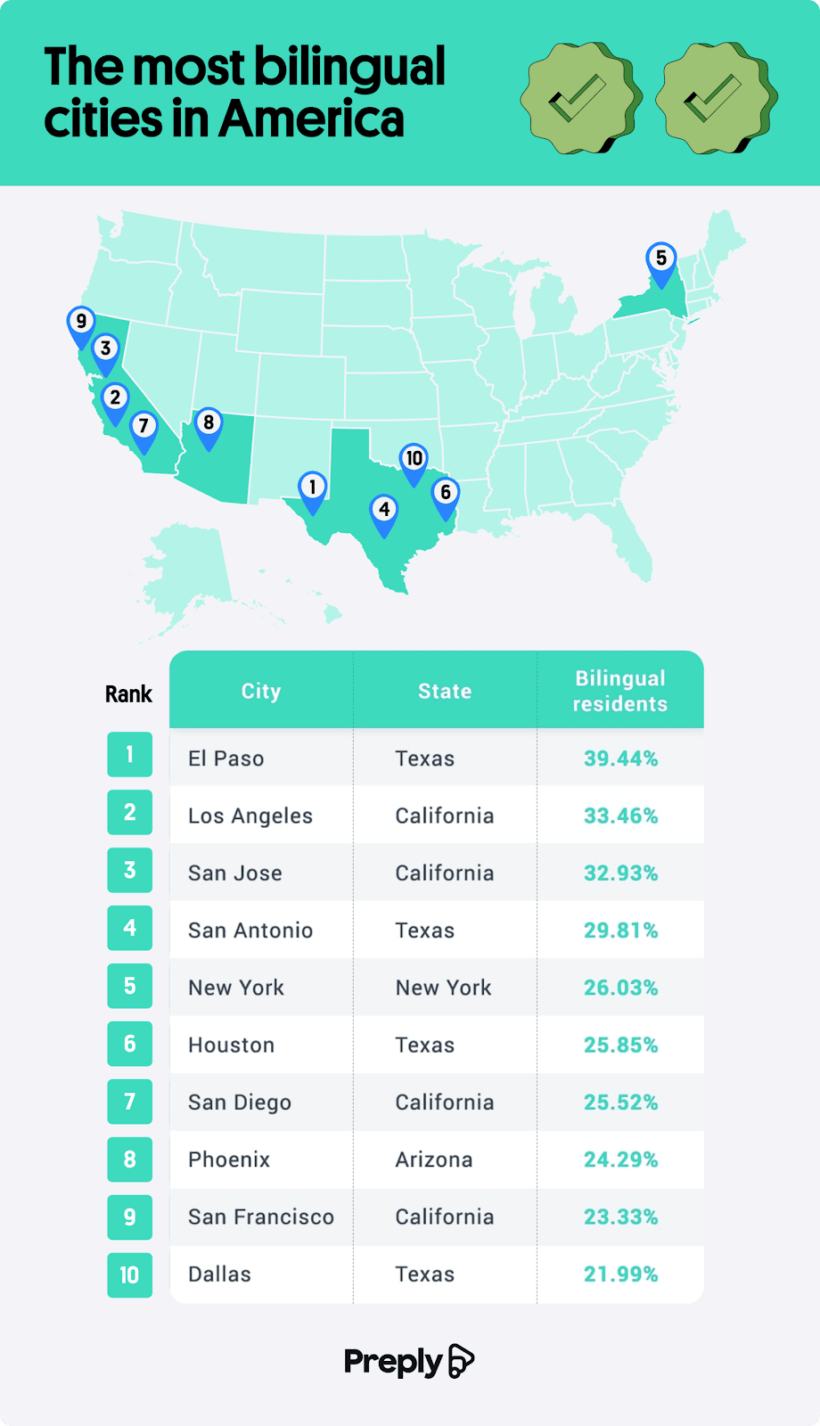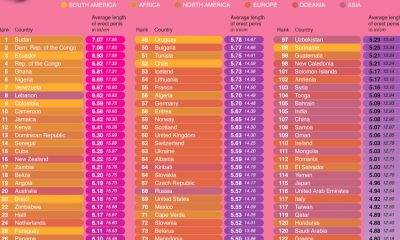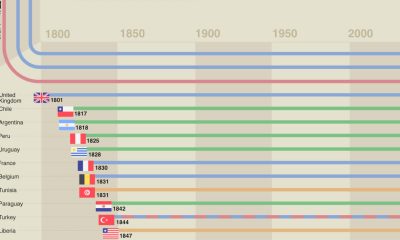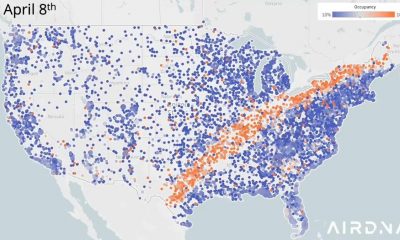Maps
Study Determines the Countries Most Crowded with Tourists
The global tourism industry is more significant than ever as jetsetters head for new sights, cultures, and sensations. All travelers have their own draws to a destination. Some seek out beautiful natural scenes, others want to visit culture-packed cities, and others focus on food quality. This map from Irish Dual Citizenship gives us further insight into what global tourists value most when traveling.
Click below to zoom.
The team determined that these ten countries are packed with the most tourists:
- France
- Poland
- Mexico
- United States
- Thailand
- Italy
- Czech Republic
- Spain
- Canada
- Hungary
The countries that receive the least visitors are:
- American Samoa
- Tuvalu
- Solomon Islands
- Marshall Islands
- Comoros
- Chad
- Kiribati
- Micronesia
- Palau
- Samoa
- Moldova
We can see from the most popular list that affordability plays a large role in travel destination choice. Poland is the most affordable European country to visit, and Mexico offers incredible food and beachside resorts for some of the lowest prices. People flock to gorgeous natural scenery like the United States National Parks or the beaches and rainforests of Thailand. Still others seek out unique culture, which is why France is a perennial favorite destination along with other European destinations like Italy, Spain, Czech Republic, and Hungary.
On the flip side, safety issues drive tourists away. Many of the countries at the very bottom of the list are dangerous due to violent crime, active war zones, or terrorism. Some countries are too remote and rugged to travel to, or they just aren’t on the international radar as an appealing destination.
Charts
These States Have the Cleanest Homes in the U.S.
The Oxi Fresh team has revealed the state of home cleanliness across the United States with a map ranking states by their score on the custom-made Oxi Fresh Home Cleanliness Index. Cleanliness can vary by cultural definitions and factors like busy lives can make our homes less clean than we would like. Studies have found that Americans spend about eight hours a month cleaning their homes. The team offers us a more in-depth look at the state of American cleanliness in their maps.
Click below to zoom.
The team formed the Home Cleanliness Index based on responses to survey questions. Five questions assessed how often residents perform specific cleaning tasks, like vacuuming, dusting, cleaning bathrooms, and changing bed sheets. They were also asked to rate their home’s cleanliness, the amount of clutter in their home, and how comfortable they would be with unexpected guests seeing their home in its current state. Lastly, the team asked whether residents in these states use a professional cleaning service.
These 10 states had the highest scores on the index:
- Wyoming
- Delaware
- Rhode Island
- Kansas
- Iowa
- Idaho
- Minnesota
- Arkansas
- Connecticut
- Tennessee
Wyoming residents are the cleanest, and they know it! 96% of them would be proud to have unexpected guests over who see the state of their home as it is. Wyoming homeowners deep-clean their carpets the most, mop the most, and change their bed linens the most often. It seems Wyoming homemakers prioritize cleaning and take great pride in their homes.
On the other side of the coin, these were the states with the lowest scores:
- New Hampshire
- North Carolina
- Maryland
- Maine
- Oregon
- Oklahoma
- Hawaii
- North Dakota
- Washington
- Utah
Utah had the lowest score overall at 69.76 out of 180 points. Utah residents reported the lowest scores for home cleanliness, but their data lends some credence to this. They dust, vacuum, and mop the least frequently. Utah may struggle with cleanliness due to its poor air quality. It has some of the worst air quality in the United States, with dust drifting in from the Great Salt Lake playa, as well as high emissions from gasoline vehicles and wood-burning stoves. Utah residents may feel they’re fighting a losing battle against dust, dirt, and grime and have lowered their standards.
There are many fun and interesting facts to glean from the team’s data. Delaware residents vacuum and mop the most, while Vermont residents maintain the cleanest kitchens with the highest number of kitchen counter wipe-downs. People in Iowa are the most likely to hire a professional cleaner. Arizona residents mop the least, maybe because the dry environment keeps out mud. Georgia and Arizona residents vacuum their carpets the least, but perhaps carpets and rugs aren’t as popular in these warm states. The data gathered here provide numerous opportunities to reflect on how various state factors may influence cleaning standards and norms.
Charts
Map Shows the Most Bilingual Cities in America
The United States is home to a diverse array of cultures, ethnicities, and languages. It attracts visitors and immigrants from all around the world, so it’s easy to find people who can speak another language in addition to English. Census Bureau statistics show that 21% of Americans are bilingual. The team at Preply took a deep dive into this data by determining which cities have the most and least bilingual residents.
Click below to zoom.
 The team defined bilingual as people who report speaking both English and one additional language “very well,” which would mean functioning at a fluency level in two languages. They created two maps to show the results. According to the team’s data, these cities have the most bilingual people in America:
The team defined bilingual as people who report speaking both English and one additional language “very well,” which would mean functioning at a fluency level in two languages. They created two maps to show the results. According to the team’s data, these cities have the most bilingual people in America:
- El Paso, Texas
- Los Angeles, California
- San Jose, California
- San Antonio, Texas
- New York, New York
- Houston, Texas
- San Diego, California
- Phoenix, Arizona
- San Francisco, California
- Dallas, Texas
In El Paso, the majority of the population speaks Spanish, which has been the case since 1965. Seven out of ten residents speak a language other than English. El Paso is located very close to the Mexican border, resulting in a high presence of immigrants, visitors, and family ties with Mexico. The same is true in Los Angeles, where nearly half the population is of an ethnic group that speaks Spanish. Overall, the most common second language spoken in the U.S. is Spanish, although you’ll find a wide variety of languages across the country.
As for the least bilingual cities, the team found that these 10 cities take the top spots:
- Detroit, Michigan
- Indianapolis, Indiana
- Nashville, Tennessee
- Jacksonville, Florida
- Columbus, Ohio
- Washington, D.C.
- Charlotte, North Carolina
- Oklahoma City, Oklahoma
- Philadelphia, Pennsylvania
- Seattle, Washington
Detroit may have the fewest bilingual speakers due to its shrinking population. It’s difficult to have diversity of cultures and languages in a small population. As industries shift location, sometimes you see certain populations follow. Detroit is known for auto manufacturing, but that industry has shrunk considerably since the city’s heyday. These statistics suggest that economics can have an impact on bilingual populations.
After Spanish, common second languages include Asian languages like Mandarin or Korean. There are so many benefits to becoming bilingual. Beyond being useful in travel, it can help people in work and social situations. Approximately 43% of the world’s population is bilingual, with people from all over the world learning English online. If the team created a worldwide map of bilingual locations, they’d find that speaking two languages in daily life is common in Switzerland, where 42% of the population speaks two languages on a daily basis. In France, however, only 20% of the population speaks a language other than French. Typically, bilingual people can speak English and live in and around Paris.
Overall, the most widely spoken languages in the world are Chinese, English, and Spanish, making it beneficial for anyone to learn these languages. Bilingual people are known to be good listeners, and evidence suggests they’re more creative! It’s a valuable skill to employers, and it can improve your memory and attention span.
Maps
Explore the Most Translated Books in the World
Wide translation is a hallmark of a book and an author’s success and influence, indicating high readership and a place in the world’s cultural consciousness. The team at Preply shows us which novels have earned that honor with a map showing the most translated book from every country in the world (based on the author’s origin). This map offers a fascinating look into a vast world of literature, featuring timeless classics and some books with unexpected popularity.
Click below to zoom.
It’s likely no surprise to readers that the Bible is the most translated book, available in over 700 languages. After the Bible, the world’s most translated work is a charming children’s book from France. The Little Prince is an illustrated novel for young readers by Antoine de Saint-Exupéry, available in hundreds of languages. The book’s themes of friendship, loss, loyalty, responsibility, and love resonate with children and adults alike all over the world.
North American favorites include Canada’s coming-of-age tale, Anne of Green Gables. The author L.M. Montgomery overcame a sexist literary world to prove her worth, with 36 translations of her novel, which has been widely popular since its release and has had staying power over many of her contemporary male peers. As for the United States, it may be surprising to learn that the most translated book is a 1980 self-help title, The Way to Happiness, written by L. Ron Hubbard, a sci-fi author and founder of the niche religion Scientology.
Moving on to South America, it’s not surprising that we find some beloved works of magical realism. This subgenre originated in South America, and some of its most translated works represent magical realism’s enduring legacy, including The Alchemist by Paulo Coelho and One Hundred Years of Solitude by Gabriel Garcia Marquez.
As for Europe, home to many literary giants besides France’s Saint-Exupéry, we see a lot of representation of children’s novels. Italy’s Carlo Collodi penned The Adventures of Pinocchio. The world-famous wooden puppet who dreamed of being a real boy has a tale that’s been translated into over 300 languages. England’s most translated book is not a play by Shakespeare, but Lewis Carroll’s bizarre and imaginative tale, Alice’s Adventures in Wonderland. And, of course, Europe is the origin of world-famous fairy tales, penned by some of the most widely translated authors, including Jacob Grimm of Germany and Hans Christian Andersen of Denmark.
Africa is a massive continent packed with unique cultures, but the most translated African title is from Kenyan author Nagugi wa Thiong’o with The Upright Revolution: Or Why Humans Walk Upright, a fable that explains why humans walk on two legs and what connects humans worldwide. While often associated with France, Albert Camus was born in Algeria and claims its most translated book, The Stranger. The same is true of Oxford professor and author J.R.R. Tolkien, the father of modern fantasy. He was born in South Africa and claims to have written their most translated title, The Hobbit.
Asia has its own diverse and ancient literary traditions, but its most translated novel was a more recent title from 1998. Turkey’s Orhan Pamuk wrote a novel called My Name is Red, translated into more than 60 languages. Meanwhile, contemporary Japanese author Haruki Murakami takes the number two spot with his novel, Norwegian Wood.
Lastly, the map zooms in on Oceania, where we find Australia’s most translated novel, The Thorn Birds by Colleen McCullough, and New Zealand’s The Whale Rider, which was adapted into a critically-acclaimed film about the Māori community.
-

 Business Visualizations1 year ago
Business Visualizations1 year agoEverything Owned by Apple
-

 Business Visualizations12 months ago
Business Visualizations12 months agoAmerica’s Most Valuable Companies Ranked by Profit per Employee
-

 Business Visualizations5 months ago
Business Visualizations5 months agoThe Biggest Employers by Industry
-

 Business Visualizations8 months ago
Business Visualizations8 months agoThe Biggest Fortune 500 Company in Every State
-

 Maps2 years ago
Maps2 years agoPenis Lengths Around the World
-

 Timelines2 years ago
Timelines2 years agoA History of the Oldest Flags in the World
-

 Business Visualizations2 years ago
Business Visualizations2 years agoNew Animated Map Shows Airbnb’s Fully Booked Cities Along the 2024 Eclipse Path of Totality
-

 Business Visualizations2 years ago
Business Visualizations2 years agoAll The Brands Owned By PepsiCo



